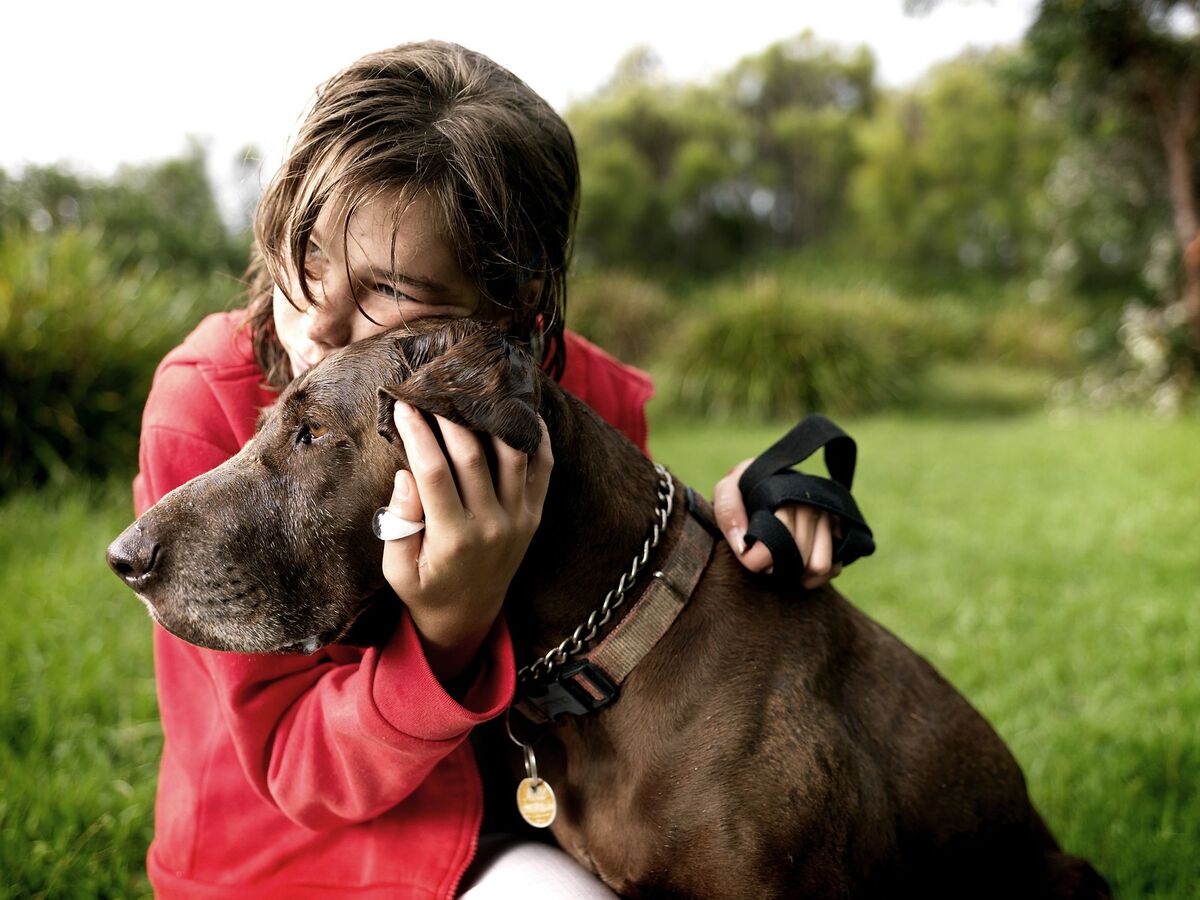Home>Health & Wellness>Common Health Issues>What Can I Do For A Diabetic Dog


Common Health Issues
What Can I Do For A Diabetic Dog
Modified: February 21, 2024
Learn about common health issues in diabetic dogs and discover what you can do to help manage their condition. Find expert advice and tips to keep your furry friend healthy and happy.
(Many of the links in this article redirect to a specific reviewed product. Your purchase of these products through affiliate links helps to generate commission for Pawsomeoldies.com, at no extra cost. Learn more)
Table of Contents
Introduction
Diabetes is a common health issue that affects not only humans but also our beloved canine companions. Just like in humans, diabetes in dogs can lead to various health complications if not properly managed. As a responsible pet owner, it's crucial to understand the intricacies of this condition and how to provide the best care for a diabetic dog.
Managing diabetes in dogs requires a multifaceted approach, encompassing dietary adjustments, regular exercise, vigilant monitoring of blood sugar levels, and consistent medication administration. By delving into the nuances of diabetes management, pet owners can significantly improve the quality of life for their furry friends.
In this comprehensive guide, we will explore the various aspects of caring for a diabetic dog, offering practical insights and valuable tips to help pet owners navigate this challenging but manageable condition. From understanding the fundamentals of diabetes in dogs to implementing a tailored diet and exercise regimen, we will cover all the essential facets of canine diabetes care.
By the end of this guide, pet owners will gain a deeper understanding of how to support their diabetic dogs, empowering them to provide the necessary care and attention to ensure their pet's well-being. Let's embark on this enlightening journey to unravel the intricacies of managing diabetes in our loyal canine companions.
Read more: What Do I Feed A Dog With Diabetes?
Understanding Diabetes in Dogs
Diabetes mellitus, commonly referred to as diabetes, is a metabolic disorder characterized by the body's inability to regulate blood sugar levels effectively. This condition can also manifest in our canine companions, leading to similar health implications as seen in humans. In dogs, diabetes primarily occurs in two forms: Type 1 diabetes, which involves a lack of insulin production, and Type 2 diabetes, which involves insulin resistance.
Causes and Risk Factors
The exact causes of diabetes in dogs are not fully understood, but certain factors can contribute to its development. Genetic predisposition, obesity, pancreatitis, and certain medications are among the potential risk factors associated with canine diabetes. Additionally, female dogs and certain breeds, such as poodles, dachshunds, and beagles, are more susceptible to developing diabetes.
Symptoms
Recognizing the symptoms of diabetes in dogs is crucial for early detection and intervention. Common signs include increased thirst and urination, sudden weight loss, excessive hunger, lethargy, and recurrent urinary tract infections. Additionally, some dogs may experience cataracts, leading to impaired vision.
Diagnosis
Diagnosing diabetes in dogs involves a thorough evaluation by a veterinarian. This typically includes a physical examination, blood tests to measure glucose levels, and urine analysis to detect the presence of glucose and ketones. These diagnostic procedures help confirm the presence of diabetes and determine the appropriate course of treatment.
Impact on Overall Health
Untreated diabetes can have detrimental effects on a dog's overall health. Chronic high blood sugar levels can lead to complications such as kidney disease, neuropathy, and an increased susceptibility to infections. Additionally, unregulated diabetes can impact a dog's energy levels, appetite, and overall quality of life.
Understanding the intricacies of diabetes in dogs is pivotal for pet owners, as it enables them to recognize potential symptoms and seek timely veterinary care. By gaining insight into the causes, symptoms, and diagnostic processes associated with canine diabetes, pet owners can take proactive measures to support their furry companions and provide them with the necessary care and attention.
Managing a Diabetic Dog's Diet
A well-managed diet plays a pivotal role in the overall health and stability of a diabetic dog. When crafting a dietary plan for a diabetic dog, the primary goal is to regulate blood sugar levels and maintain a healthy body weight. Here are essential considerations for managing a diabetic dog's diet:
Consistent Feeding Schedule
Establishing a consistent feeding schedule is crucial for diabetic dogs. By feeding them at the same times each day, it helps regulate their blood sugar levels and facilitates the administration of insulin, if required. Consistency in meal timing also aids in stabilizing their energy levels and preventing fluctuations in blood glucose.
High-Quality, Balanced Nutrition
Opting for high-quality, balanced dog food is imperative for diabetic dogs. Look for commercial dog food specifically formulated for diabetic dogs or consult with a veterinarian to select a suitable diet. These specialized diets often contain controlled levels of carbohydrates to prevent rapid spikes in blood sugar, along with essential nutrients to support overall health.
Controlled Carbohydrate Intake
Monitoring and controlling the carbohydrate intake of diabetic dogs is essential for managing their condition. Carbohydrates directly impact blood sugar levels, so selecting dog food with low to moderate carbohydrate content is beneficial. Additionally, complex carbohydrates that are slowly digested, such as whole grains and legumes, can help regulate blood glucose levels more effectively.
Weight Management
Maintaining an optimal body weight is crucial for diabetic dogs, as obesity can exacerbate insulin resistance and complicate diabetes management. If a diabetic dog is overweight, a tailored weight management plan should be implemented, which may involve adjusting portion sizes, incorporating low-calorie treats, and promoting regular exercise to support weight loss.
Regular Monitoring and Adjustments
Regular monitoring of a diabetic dog's response to their diet is essential for making necessary adjustments. Monitoring their weight, energy levels, and blood glucose levels provides valuable insights into the effectiveness of their current dietary plan. Based on these observations, adjustments to portion sizes, meal frequency, or the composition of their diet may be required to optimize their health.
By prioritizing a well-structured, balanced diet tailored to the specific needs of diabetic dogs, pet owners can significantly contribute to the effective management of this condition. Consistency, quality nutrition, controlled carbohydrate intake, weight management, and ongoing monitoring are key elements in ensuring that a diabetic dog's diet supports their overall well-being and helps them lead a fulfilling and healthy life.
Exercise and Activity for Diabetic Dogs
Regular exercise and physical activity are integral components of a holistic approach to managing diabetes in dogs. Engaging in appropriate levels of exercise not only contributes to weight management and overall fitness but also plays a significant role in regulating blood sugar levels and enhancing insulin sensitivity. When devising an exercise regimen for a diabetic dog, several key considerations should be taken into account to ensure their safety and well-being.
Tailored Exercise Plans
Designing a tailored exercise plan that aligns with a diabetic dog's specific needs is essential. Factors such as the dog's age, breed, overall health, and any existing complications related to diabetes should be carefully considered. Tailoring the exercise regimen to accommodate the dog's individual requirements helps prevent overexertion and minimizes the risk of blood sugar fluctuations during physical activity.
Consistent Activity Levels
Consistency in maintaining regular activity levels is crucial for diabetic dogs. Establishing a routine that incorporates daily walks, playtime, and moderate physical activities helps regulate their metabolism and promotes stable blood sugar levels. By adhering to a consistent exercise schedule, diabetic dogs can experience improved insulin sensitivity and better glucose utilization, contributing to overall diabetes management.
Monitoring During Exercise
Vigilant monitoring of a diabetic dog's response to exercise is paramount. Observing their energy levels, hydration, and any signs of fatigue or distress during physical activity is essential for ensuring their well-being. Additionally, monitoring their blood sugar levels before and after exercise can provide valuable insights into how their body responds to different types and durations of physical activity.
Low-Impact Exercise Options
Incorporating low-impact exercise options, such as swimming or gentle walks, can be beneficial for diabetic dogs, especially those with joint issues or mobility limitations. Low-impact activities offer cardiovascular benefits without placing excessive strain on the dog's joints, making them ideal for promoting overall fitness while minimizing the risk of injury or discomfort.
Interactive Play and Mental Stimulation
Engaging diabetic dogs in interactive play and mental stimulation activities not only provides physical exercise but also contributes to their overall well-being. Interactive games, puzzle toys, and obedience training sessions offer mental stimulation and help maintain their cognitive function, fostering a holistic approach to their health and happiness.
By implementing a well-structured exercise and activity plan tailored to the specific needs of diabetic dogs, pet owners can actively contribute to their pet's diabetes management. Consistency, tailored activities, vigilant monitoring, and a focus on overall well-being collectively support the physical and mental health of diabetic dogs, enhancing their quality of life and fostering a fulfilling companionship.
Monitoring and Managing Blood Sugar Levels
Monitoring and managing blood sugar levels is a critical aspect of caring for a diabetic dog. By diligently tracking and regulating their blood glucose levels, pet owners can effectively support their dog's overall health and well-being. Here's an in-depth exploration of the strategies and considerations involved in monitoring and managing blood sugar levels in diabetic dogs.
Home Blood Glucose Monitoring
Implementing a home blood glucose monitoring routine is essential for diabetic dogs. This involves using a glucometer to measure their blood sugar levels at specific times throughout the day. The frequency of monitoring may vary based on the dog's individual needs and the stage of their diabetes management. Typically, pet owners are advised to perform blood glucose tests before meals, before insulin administration (if applicable), and at other intervals recommended by the veterinarian.
Understanding Blood Glucose Patterns
Regular monitoring enables pet owners to gain insights into their dog's blood glucose patterns. By tracking the fluctuations in blood sugar levels, pet owners can identify trends, such as post-meal spikes or hypoglycemic episodes, and make informed adjustments to their dog's diet, exercise, and medication regimen. Understanding these patterns empowers pet owners to proactively manage their dog's diabetes and collaborate effectively with their veterinarian.
Read more: What Can I Do If My Dog Has Nose Cancer
Consistent Record-Keeping
Maintaining detailed records of blood glucose readings, insulin doses (if applicable), meals, exercise, and any notable observations is crucial. Consistent record-keeping provides a comprehensive overview of the dog's diabetes management, facilitating informed discussions with the veterinarian and aiding in the identification of potential triggers or patterns affecting their blood sugar levels. These records serve as valuable reference points for evaluating the effectiveness of the current diabetes management plan and making informed adjustments as needed.
Collaborating with the Veterinarian
Regular communication and collaboration with the veterinarian are integral to effectively managing a diabetic dog's blood sugar levels. Sharing the recorded blood glucose data and observations with the veterinarian during check-ups enables them to assess the dog's progress, make necessary adjustments to the treatment plan, and provide tailored guidance based on the specific needs of the dog. This collaborative approach ensures that the dog receives personalized care and optimized diabetes management.
Response to Hypoglycemia and Hyperglycemia
Being prepared to address hypoglycemic (low blood sugar) and hyperglycemic (high blood sugar) episodes is essential. Pet owners should familiarize themselves with the symptoms of both conditions and have a plan in place to address them promptly. This may involve administering glucose gel or syrup to raise low blood sugar levels or seeking immediate veterinary attention in the case of severe or prolonged episodes.
By prioritizing diligent monitoring, consistent record-keeping, collaboration with the veterinarian, and proactive responses to blood sugar fluctuations, pet owners can effectively manage their diabetic dog's blood glucose levels. This proactive approach not only supports the dog's physical health but also fosters a deeper understanding of their individual diabetes management needs, ultimately enhancing their overall quality of life.
Medication and Insulin Administration
Medication and insulin administration are fundamental components of managing diabetes in dogs. For diabetic dogs requiring insulin therapy, consistent and precise administration is crucial to regulate their blood sugar levels and support their overall health. Here's an in-depth exploration of the strategies and considerations involved in medication and insulin administration for diabetic dogs.
Tailored Treatment Plans
Upon diagnosis of diabetes in a dog, the veterinarian devises a tailored treatment plan that may include insulin therapy. The specific type of insulin, dosage, and administration schedule are determined based on the dog's individual needs, blood glucose levels, and overall health. It's imperative for pet owners to adhere to the prescribed treatment plan and seek clarification from the veterinarian regarding any aspects of medication administration.
Insulin Administration Techniques
Administering insulin to a diabetic dog requires precision and attentiveness. The veterinarian provides detailed guidance on the proper injection technique, site rotation, and storage of insulin. Typically, insulin is administered subcutaneously, and pet owners are instructed on the correct method to draw up the insulin, select injection sites, and ensure consistent delivery. Following the veterinarian's instructions meticulously is essential to maintain the effectiveness of insulin therapy.
Consistent Administration Schedule
Establishing a consistent insulin administration schedule is paramount for diabetic dogs. Pet owners are advised to administer insulin at the same times each day, aligning with the dog's feeding schedule and in coordination with their veterinarian's recommendations. Consistency in insulin administration helps regulate blood sugar levels and supports the dog's overall diabetes management.
Monitoring Response to Insulin
Regular monitoring of the dog's response to insulin is essential for evaluating the effectiveness of the treatment. Observing their blood glucose levels, energy levels, appetite, and overall well-being provides valuable insights into how the dog's body responds to insulin therapy. Any notable changes or concerns should be promptly communicated to the veterinarian for further assessment and potential adjustments to the treatment plan.
Read more: Why Can’t A Dog With Diabetes Eat And Vomit?
Collaboration with the Veterinarian
Maintaining open communication and collaboration with the veterinarian is integral to successful insulin administration and diabetes management. Pet owners should actively engage in discussions with the veterinarian, share observations regarding the dog's response to insulin, and seek guidance on any concerns or uncertainties. This collaborative approach ensures that the dog receives personalized care and optimized insulin therapy.
By prioritizing consistent administration, precise techniques, vigilant monitoring, and collaborative communication with the veterinarian, pet owners can effectively support their diabetic dog's insulin therapy. This proactive approach contributes to the dog's overall well-being and fosters a harmonious partnership between pet owners and their veterinary care team in managing diabetes in dogs.
Regular Veterinary Check-ups
Regular veterinary check-ups are a cornerstone of comprehensive diabetes management for dogs. These routine examinations provide invaluable opportunities for veterinarians to assess the dog's overall health, monitor the progression of diabetes, and make informed adjustments to the treatment plan. By prioritizing regular veterinary check-ups, pet owners can actively contribute to their diabetic dog's well-being and ensure that their pet receives personalized care tailored to their specific needs.
During veterinary check-ups, the veterinarian conducts thorough physical examinations to evaluate the dog's body condition, vital signs, and any potential indicators of diabetes-related complications. This comprehensive assessment enables the veterinarian to identify any changes or concerns that may require further attention, such as weight fluctuations, signs of neuropathy, or the development of cataracts. Additionally, the veterinarian may perform blood tests to assess the dog's glucose levels, kidney function, and overall metabolic health, providing crucial insights into the effectiveness of the current diabetes management plan.
In addition to physical examinations and diagnostic tests, regular veterinary check-ups facilitate open and collaborative discussions between pet owners and the veterinary care team. Pet owners have the opportunity to share observations regarding their dog's behavior, appetite, energy levels, and response to medication, offering valuable insights that contribute to a holistic understanding of the dog's well-being. This exchange of information empowers pet owners to actively participate in their dog's diabetes management and gain a deeper understanding of the condition.
Furthermore, veterinary check-ups serve as occasions for pet owners to seek guidance on any concerns or uncertainties related to their dog's diabetes care. Whether it involves adjustments to the diet, insulin administration techniques, or strategies for managing blood sugar fluctuations, the veterinarian can provide tailored recommendations and address any questions, fostering a supportive and collaborative approach to diabetes management.
By embracing regular veterinary check-ups as integral components of their diabetic dog's care, pet owners demonstrate a proactive commitment to their pet's health and well-being. These check-ups not only contribute to the effective management of diabetes but also strengthen the bond between pet owners, their diabetic dogs, and the veterinary care team. Through consistent monitoring, open communication, and collaborative decision-making, regular veterinary check-ups play a pivotal role in optimizing the quality of life for diabetic dogs and fostering a harmonious partnership between pet owners and their veterinary care providers.
Conclusion
Caring for a diabetic dog demands dedication, attentiveness, and a multifaceted approach that encompasses dietary management, exercise, blood sugar monitoring, medication administration, and regular veterinary care. By delving into the intricacies of diabetes in dogs and embracing a proactive mindset, pet owners can significantly enhance the quality of life for their beloved canine companions.
Understanding the nuances of diabetes in dogs, including its causes, symptoms, and potential health implications, empowers pet owners to recognize early warning signs and seek timely veterinary care. This foundational knowledge serves as a springboard for implementing tailored strategies to support a diabetic dog's well-being.
Crafting a well-managed diet tailored to the specific needs of a diabetic dog is pivotal. Consistent feeding schedules, high-quality nutrition, controlled carbohydrate intake, and vigilant monitoring form the pillars of an effective dietary plan. By prioritizing a balanced diet, pet owners can contribute to stabilizing their dog's blood sugar levels and promoting overall health.
Incorporating regular exercise and tailored activity plans not only supports weight management but also plays a crucial role in regulating blood sugar levels and enhancing insulin sensitivity. By engaging diabetic dogs in appropriate levels of physical activity, pet owners contribute to their pet's overall fitness and well-being.
Vigilant monitoring and management of blood sugar levels are essential components of diabetes care for dogs. Through consistent blood glucose monitoring, understanding patterns, and collaborating with veterinarians, pet owners can gain valuable insights into their dog's diabetes management needs and make informed adjustments to their care plan.
Precise medication and insulin administration, coupled with collaborative communication with the veterinary care team, are integral to supporting a diabetic dog's overall health. By adhering to prescribed treatment plans, pet owners actively contribute to the effectiveness of insulin therapy and the dog's diabetes management.
Regular veterinary check-ups serve as pivotal opportunities for comprehensive assessments, collaborative discussions, and informed adjustments to the diabetes management plan. By prioritizing these check-ups, pet owners actively participate in their dog's care and gain a deeper understanding of their pet's health needs.
In conclusion, the holistic care of a diabetic dog requires a harmonious blend of knowledge, dedication, and collaborative engagement with veterinary care providers. By embracing the multifaceted aspects of diabetes management, pet owners can provide their diabetic dogs with the necessary support, attention, and care to lead fulfilling and healthy lives.








